Ground Capacity 42,200 Website Club home page | Chairman Tulio Gómez Manager Hernán Torres | |
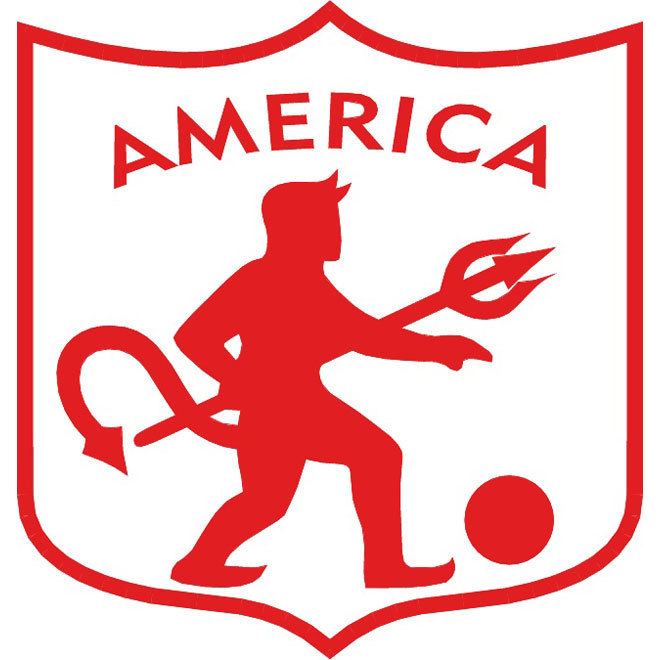 | ||
Full name Sociedad Anónima Deportiva América S. A. Nickname(s) Los Diablos Rojos (The Red Devils)Los Escarlatas (The Scarlets)La Mechita (The Fuse/The Rag)La Pasión de un Pueblo (The People's Passion) Founded 13 February 1927, Cali, Colombia Profiles | ||
Dimayor sancion al am rica de cali por transmisi n de partidos v a internet
Sociedad Anónima Deportiva América S. A., best known as América de Cali, is a Colombian football team based in Cali. In 2017, the team will play in the Categoría Primera A after having been promoted. They play their home games at the Olímpico Pascual Guerrero stadium.
Contents
- Dimayor sancion al am rica de cali por transmisi n de partidos v a internet
- Beginning
- First championships
- 1979 Aquel 79 First star
- 1982
- 1983 Third star
- 1984
- 1985 Fifth star
- 1986 Five consecutive titles
- 1990s
- The fourth Libertadores final Garabato strikes again
- The new millennium and the Clinton List
- Crisis and relegation
- Home
- Away
- Third
- Crest
- Amrica de Cali vs Deportivo Cali
- Amrica de Cali vs Atltico Nacional
- Amrica de Cali vs Millonarios
- Amrica de Cali vs Santa Fe the dispute over the color red
- Domestic
- International
- Amateur
- Friendly
- Current squad
- Presidents
- References
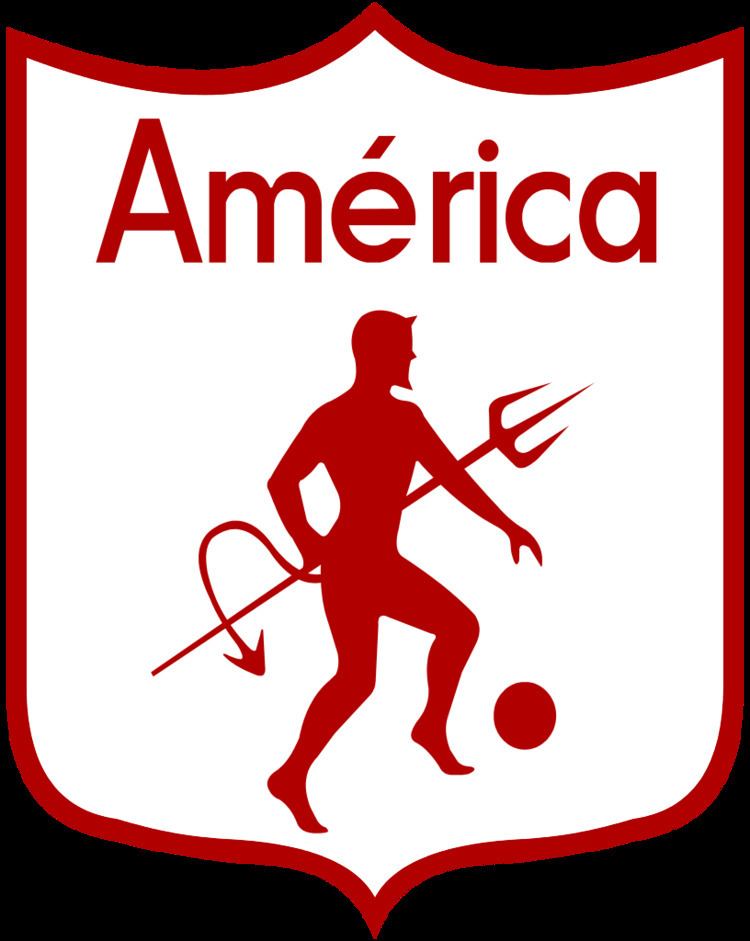
América de Cali has successed at both domestic and international level. With thirteen national championships, they are the third most successful team in Colombia. They also have won a second division title (in 2016). Internationally, they were the runner-up of the Copa Libertadores for three consecutive years, from 1985 to 1987, and also in 1996. They lost twice with River Plate, once with Argentinos Juniors (both from Argentina) and once with Peñarol of Uruguay. They have won two international tournaments: the 1999 Copa Merconorte and the 1975 Copa Simón Bolívar.
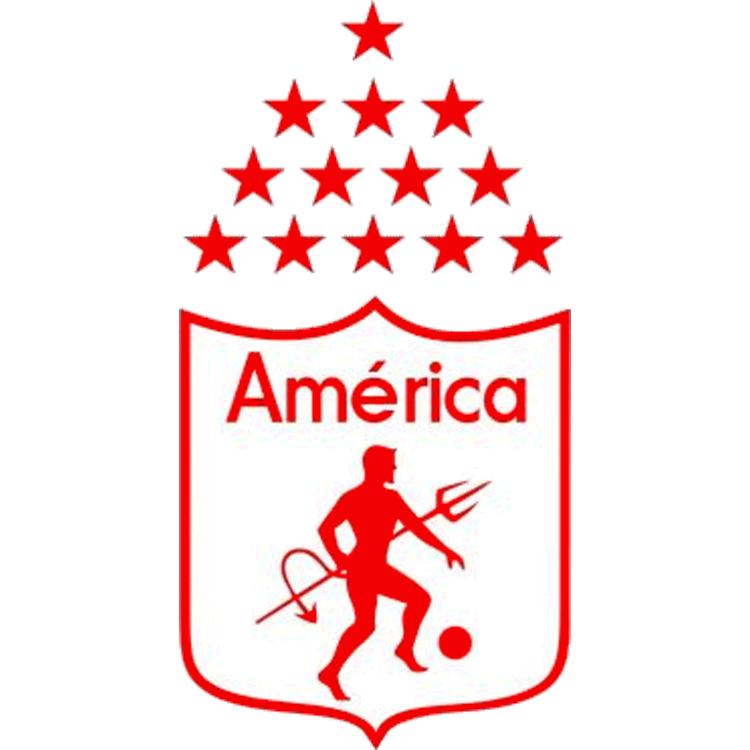
Despite a lack of international accolades, in 1996 the IFFHS ranked América de Cali as the second best club side in the world, only beaten by Italian champions Juventus. In 2011, América was relegated to the local second division.

The club was officially founded in 1927, but traces it origins to the América Football Club founded in 1918. América has rivalries with a number of teams in Colombia, most notably with crosstown rivals Deportivo Cali. Matches between them are known as the "Clásico vallecaucano". Other rival clubs include Atlético Nacional and Millonarios.
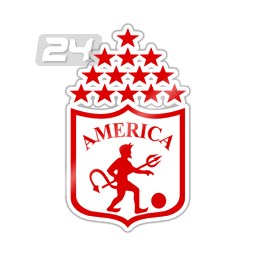
Beginning
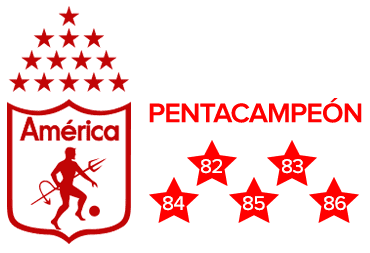
The team's roots trace to 1918, when some students from the Colegio Santa Librada formed their own team, called América FC, to compete with other schools. The team won the Copa Centenario Batalla de Boyacá in 1919, one of the first official tournaments of the Colombian football. In 1923 the team was refounded as Racing Club, based on the Argentine team of the same name. The team's uniform was light blue with white vertical stripes, light blue shorts and socks with horizontal stripes in white and light blue. On 13 February 1927, the club was formed officially, with Hernán Zamorano Isaacs as the first president of the club.
First championships
América got off to a slow start in the Colombian tournament, not achieving even the runner-up position until 1960 and not playing its first Copa Libertadores until 1969. The team, however, went through a radical change in 1979, hiring Gabriel Ochoa Uribe as its coach. During the 12 years Gabriel Ochoa Uribe worked as coach of the team, América obtained its first seven National Cups and rapidly created an immense diversity of fans that cheered it around the country. During these years, América finished second place in the Copa Libertadores consecutively in 1985 to 1987.
1979 – "Aquel 79" First star
Every achievement América de Cali had made throughout its history would be surpassed on 19 December 1979, better known as "Aquel 19" like the popular song by Alberto Beltran. Among these achievements were the 5–0 victory over Deportivo Cali, the undefeated season of 1967, the Second place finish in 1960 and 1969, and their impressive journey in the 1970 Copa Libertadores. On "Aquel 79" ("That 79"), the entire city of Cali celebrated the team's first national title. Gabriel Ochoa Uribe said, "We are going to be champions. We deserve it. This night we will write history." That night, América de Cali overcame a difficult adversary Unión Magdalena, in order to be recognized as the 1979 Colombian Soccer Champion. This unforgettable night, the entire city was painted red with the fans who celebrated until the next day.
1982
After three years of winning their first title, "La Mecha" was heading towards their second one. It was a cold and grey morning that day in Bogotá, where the team faced Millonarios. With noise and an old bus, América de Cali arrived to the stadium Nemesio Camacho (El Campín). Caleños that lived in the city came to support the team as well as many fans arriving from Cali. Millonarios came out with their full attack, but América de Cali played with tranquility and soon enough the first goal came As they kept a close watch on the other games being played that day, América de Cali withstood the constant attack of Millonarios. Time took an important role and as it ran down, it only benefited América de Cali. Deportes Tolima had won their match, Deportivo Pereira were tying their match, and Nacional had scored their second goal. Everything was going their way and the only thing left to do was win the game against Millonarios. The final minutes were very tense, but once the referee blew the whistle, the fans were able to chant once more, "América Campeon".
1983 – Third star
América de Cali began the season with some changes to create a stronger team for the Copa Libertadores. It included the arrivals of Daniel Teglia, Claudio Casares, Willington Ortiz, Rafael "Vallenato" Agudelo, Henry Alape, Jorge Porras, and Luis Antonio Marcollata. They also brought reinforcement with Brazilians Ademir Praticio and Coccota. With a participation in the Copa Libertadores, "Los Diablos Rojos" were eliminated in the semi-final round. Gabriel Ochoa Uribe used his experience to prevent the players from losing their head, in order to accomplish one of the two titles. Willington Ortiz and Juan Manuel Battaglia shone for the team and the dynamic duo combined to score 40 goals that season. Once the second round began, only one team was considered favorite, América de Cali. América de Cali were back-to-back champions.
1984
With the same tactics and strength, América de Cali went for their fourth star. With minor changes in the team, it looked to head for their third consecutive title. Under the management of Gabriel Ochoa Uribe, it seemed that the next star would once again be red. Ochoa, showing the country that he was one of the best coaches at the time, proved it by leading the team to various accomplishments.
1985 – Fifth star
América de Cali faced a Junior team which did not want to get humiliated in its last game. América de Cali came out with everything, putting in two creative midfielders, and . With a quick goal it seemed to be an easy game for the Devils, but Junior pulled together and played it safe to at least leave with a decent result. América de Cali continued to attack, but the opponent's defense stood well and did not let anything else happen. With a few plays dangerous plays from both sides, in the end, America won with a minimum difference 1–0, obtaining the fifth star for the "Red Devils".
1986 – Five consecutive titles
The "Red Devils" made history this year by obtaining five national titles in a row; the most consecutive titles had been four, by Millonarios. The star was won against their rivals Deportivo Cali, which made the achievement even more special for the fans and the players.
1990s
The 1989 tournament was suspended due to the assassination of the referee, Álvaro Ortega. The following year, in 1990, América de Cali was once again champion and the following year marked the departure of Gabriel Ochoa Uribe. With his departure, many feared that the winning streak for the "Red Devils" was over. Despite this belief, in 1992, with Francisco Maturana as head coach and Diego Edison Umaña as assistant, América obtained its eighth star and appeared to continue its winning streak from the prior decade. Five years later, América de Cali was able to taste another championship; this was the longest tournament in the history of Colombian Professional Soccer, lasting a year and a half. During this year, América held the first position during the entire tournament and they were crowned champions of the 1996–97 season after the final match against Atlético Bucaramanga.
Also in 1996, América was recognized by the International Federation of Football History & Statistics (IFFHS) official world club ranking as the second best team in the world, preceded by Juventus of Italy. The team has been ranked 35th in the All-Time Club World Ranking of the IFFHS (International Federation of Football History & Statistics) In 1999, America disputed the national title with Atlético Nacional, in the end losing by way of penalty kicks. After playing two finals in less than three days, America finished the year off with excellent achievements: runner-up of Copa Mustang and winner of the 1999 edition of Copa Merconorte, the team's first international title, against Santa Fe.
The fourth Libertadores final "Garabato strikes again"
In 1996, América de Cali once again reached the final of the Copa Libertadores, again with River Plate. America won the first game in Cali 1–0 with a goal by Antony de Ávila from a very closed angle. This was América's chance for revenge after the loss in the 1986 final against the same rival, but in the end América lost on an Óscar Córdoba error. The first goal was scored by Hernán Crespo and in a play by Córdoba, where he left the box and did not clear the ball correctly. Crespo also scored the second goal.
The new millennium and the "Clinton List"
Despite having won the Colombian League three more times from 2000 to 2002, América has entered the millennium in economic hardship and unable to match the successful team of the 1980s. In 1995, Corporación Deportiva América was placed under watch by Executive Order 12978, commonly known in Colombia as the Clinton List. Because of its past connections with drug cartels, the United States froze the team's assets in the U.S. (valued around $1 million), and ordered other companies not to conduct direct business with América. Also, according to club president Carlos Puente, the club never received the prize money of $200,000 from the Copa Merconorte championship. Since then, América's economic crisis has been severe. At one point in time, it was immersed in nearly $10 million worth of debt. América had survived the past few years without a major sponsor, depending mostly on ticket sales for attendance at the Pascual Guerrero and the sales of soccer jerseys. The monthly salaries of its players has been below league average and América has seen itself forced to make money by selling its most recognized players.
In 2003, America again faced River Plate in the quarter-final round of the Copa Libertadores, and got their revenge by winning 4–1 (see video).
After three tournaments without reaching the final round, in 2007 América was finally able to do so with Diego Edinson Umaña as head coach and the assistance of Álex Escobar. The team had an excellent season and was a firm candidate to win the tournament, in the end falling short by only one goal. Despite this, the team was not left empty-handed, since they obtained a berth to the 2008 Copa Sudamericana after three years of not participating in an international event. For the 2008 season, Diego Umaña extended his contract and is currently in the process of preparing the team for both the Copa Mustang and the Copa Sudamericana.
In 2008, América de Cali began efforts to get off the hated Clinton List. The club and the mayor of Cali held discussions to change the team name and management, but keep all the trophies they have obtained. In the 2008-II Season, America defeated Independiente Medellín 4–1 on aggregate to win its 13th title and qualify for the 2009 Copa Libertadores. In the subsequent two years, however, they were unable to return to the play-offs mainly due to financial issues.
Crisis and relegation
After several sports and managerial problems, América was plunged into a serious institutional crisis which resulted to the relegation of the team to the Categoría Primera B in the 2011 season, and several changes of management and administration.
In the first half of the 2012 Categoría Primera B season, América reached the Apertura championship against Unión Magdalena at penalty kicks, undefeated at home with one of the best performances in the history of the category. Additionally, for the first time in five appearances in the Copa Colombia, the club achieved qualification to the knockout stages, finishing top of Group E unbeaten with 22 points; they were eliminated in the quarter-finals by Atlético Bucaramanga. In the second half of the season, América lost the first direct ascent option by does not qualify for the final of the Torneo Finalización. Already in the Final of the Year loses with Alianza Petrolera on penalties and in the Promotion Series against Cúcuta Deportivo 5–3 on aggregate, forcing it to stay for next year in the Second Division.
Home
As for the red color, is important to note, that according to historical versions recovered, America first started out using the colors blue and white, which belonged to Racing Club from Avellaneda; then América switched to red and blue. From 1927 to 1931, it alternated between a red shirt and white shorts to a white shirt and red shorts. The first goal keeper of America and one of the founders of the club, said in a chance that the first red uniforms were purchased in the only sports store, Mr. Anzola property, that had in the city, at street 13 between 8th and 9th avenues. In 1931, after a basketball game in Barranquilla, witnessed by the secretary of the delegation, Hernando Lenis, between the Union of Colombia and the "Red Devils" uniform of that color, América adopted the new color, that matched with the name that had been granted. Since then, América kept the red.
Away
Throughout history, América de Cali has had several alternative uniforms, mostly white with red; although it has come to use other colors like black or blue. The first alternative uniform that is remembered is red shorts and white shirt. In some tournaments in the 40's and 50's it used some commemorative models, including an alternative similar to the uniform of Valle selection (white shirt with a red stripe that go down left to right and red shorts). In 1958 the team used a similar uniform to Racing Club, in honor of the first uniform of América.
Third
In mid-2006, América used a black color uniform with the emblems of some sponsors recognized as Playboy, although it was used only in some games tournament. This uniform is now the club's second alternative.
Crest
The devil first appeared on the crest in 1940 because of the popular belief that the players "played like devils" on the field. During Gabriel Ochoa Uribe's twelve years with the institution, the devil was always an inconvenience for him so it was removed due to religious reasons. For this reason, the crest only carried the number of stars or titles obtained by the club.
In 1992, the devil was completely removed and was only used for the administrative aspects of the institution. As a celebration of the club's 70 years, the devil was put back on the uniforms. From this date forward, any malignant beliefs regarding the devil have been completely removed. In 2007, in order to commemorate the club's 80 years of existence, the devil was temporarily replaced with a logo that reads "80 años" (80 years) and underneath "1927–2007"; above the crest are the 13 stars obtained by the club. In 2010, the devil returns to the crest, in the Saeta shirts, which is the new sponsor.
América de Cali vs Deportivo Cali
This game is called "el clasico vallecaucano", which translated into English means "the Cauca valley derby". There is a long-standing rivalry between these two teams, and they have 21 titles combined (one more than Millonarios vs Santa Fe combined), making Cali one of the most important cities in this sport. The first trace of this derby match was in the final of a local tournament in 1931, where América was defeated by The Cali Football Club 0–1; the referee did not count two of América's goals because of supposed offside plays. Due to the referee's poor performance, América published a series of articles as a protest, leading to the team's suspension from local tournaments for a period of one year. Cali and America have played 266 clasicos, with 104 wins for Cali, 86 wins for América and 81 draws. In 1969, Deportivo Cali defeated America and won the championship. In 1986, América obtained its fifth consecutive title in the final match against Deportivo Cali and also another title in 1992. This match currently brings 30,000 to 35,000 spectators to the stadium.
América de Cali vs Atlético Nacional
Since 1979, América and Nacional have seen each other in 15 finals (previously, finals were between more than two teams). The most recent final between the two was in 2002, where América was able to defeat Nacional in both matches and as a result obtained the 12th title in its history. Statistics from matches between these two teams show that this is the most even clasico, with 79 wins for América, 74 for Nacional and 75 draws. The first time they faced each other in Copa Libertadores was in 1991, and up to this date América has six victories, Nacional four and one draw between them.
América de Cali vs Millonarios
These two teams combined have 27 titles and also count with numerous supporter groups known as barras bravas. The rivalry began in the late 1970s when América obtained its first title and it grew throughout the 1980s, a decade dominated by these two teams. Out of the ten titles from this decade, América won five of them and Millonarios won two. In the 1982 final, América de Cali defeated Millonarios in El Campín, reaching the second title in the club's history. This game was known to paralyse the entire country and they fought the 1989 title shoulder to shoulder, until it was cancelled.
América de Cali vs Santa Fe: the dispute over the color red
This is a much more recent rivalry which does not have an exact date of origin, and it is mostly expressed by Santa Fe's followers. This reaction against the team was originated in the late 1980s and early 1990s when many of Santa Fe's best players were transferred to América de Cali with little economic compensation, and in the end favored América with obtaining various titles. In the 1999 edition of Copa Merconorte, these two teams faced each other in the final; América lost 2–1 in Cali and then went to Bogotá and won 1–0. The game was decided by penalty shootouts, where América obtained its first international title.
On 11 May 2005, in a game played at El Campín, a fight broke out between the teams' barras bravas, leaving one person dead. The game's score was América 5–2 Santa Fe when the game was suspended; América was later declared the winner. This unfortunate event made the rivalry grow even more, although this only occurs in the city of Bogotá; in Cali, meanwhile, it is just another game.
Domestic
International
Amateur
Friendly
Current squad
As of 5 January 2017Note: Flags indicate national team as defined under FIFA eligibility rules. Players may hold more than one non-FIFA nationality.
